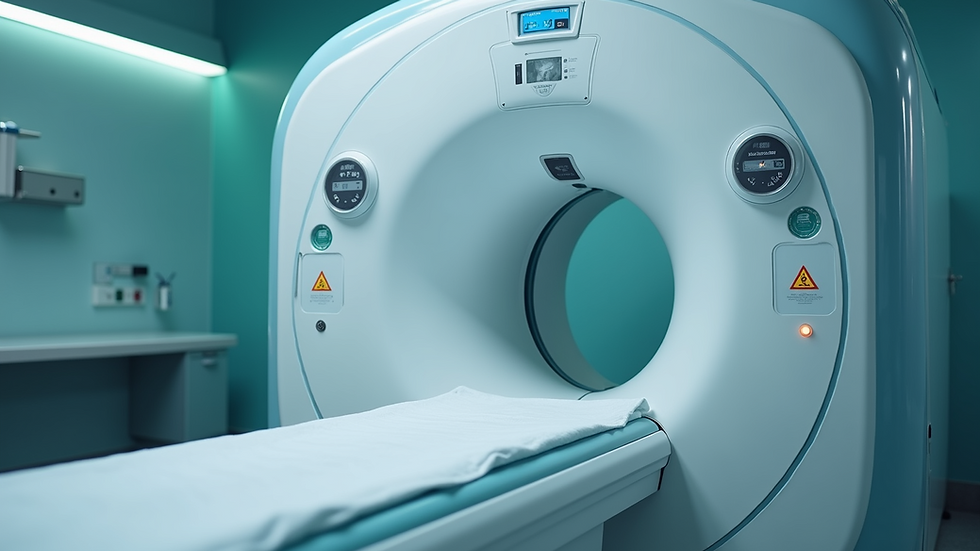The Role of Diagnostic Imaging in Healthcare
- Samuel Durrstein
- Oct 6
- 4 min read
When it comes to taking care of our health, understanding what’s happening inside our bodies is crucial. That’s where health diagnostic imaging steps in. It’s a powerful tool that helps doctors see beyond the surface, giving them a clear picture of what’s going on inside us. Whether it’s a routine checkup or investigating a specific concern, diagnostic imaging plays a vital role in guiding treatment and ensuring the best care possible.
How Health Diagnostic Imaging Supports Your Wellbeing
Health diagnostic imaging includes a variety of techniques that create images of the inside of your body. These images help healthcare providers detect, diagnose, and monitor many conditions. From broken bones to heart problems, imaging gives us a window into our health.
Some common types of diagnostic imaging include:
X-rays: Great for viewing bones and detecting fractures.
Ultrasounds: Use sound waves to create images, often used during pregnancy or to check organs.
MRI (Magnetic Resonance Imaging): Provides detailed images of soft tissues like the brain, muscles, and joints.
CT scans (Computed Tomography): Combines X-rays and computer technology to create cross-sectional images.
Each method has its strengths and is chosen based on what the doctor needs to see. For example, if you have a persistent cough, a chest X-ray might be the first step. If there’s a concern about soft tissue injury, an MRI could be more helpful.

Using these tools, doctors can catch problems early, plan treatments more effectively, and track how well you’re responding to care. This proactive approach often leads to better outcomes and peace of mind.
Exploring the Benefits of Health Diagnostic Imaging
One of the biggest advantages of health diagnostic imaging is its non-invasive nature. Unlike surgical procedures, imaging lets doctors look inside without making any cuts. This means less risk, less discomfort, and faster results.
Here are some key benefits:
Early Detection: Many diseases can be caught before symptoms appear.
Accurate Diagnosis: Clear images help avoid guesswork.
Treatment Planning: Doctors can tailor treatments based on detailed information.
Monitoring Progress: Imaging tracks how well treatments are working.
Guiding Procedures: Some imaging techniques assist during surgeries or biopsies.
For families and individuals, this means quicker answers and more personalized care. It also helps reduce anxiety by providing clear information about what’s happening inside the body.

If you ever need imaging services, it’s comforting to know that many centers offer comprehensive options. For example, comprehensive diagnostic imaging services provide a full range of tests under one roof, making the process smoother and more convenient.
What is CDI now called?
You might have heard the term CDI in healthcare settings. CDI stands for Clinical Documentation Improvement. While it’s not directly related to diagnostic imaging, it plays a role in how medical information is recorded and used.
CDI programs focus on improving the accuracy and clarity of patient records. This helps ensure that the information from diagnostic imaging and other tests is properly documented. Accurate records support better communication among healthcare providers and improve patient care overall.
In some places, CDI is evolving and may be referred to as Clinical Documentation Integrity or Clinical Documentation Improvement and Integrity. The goal remains the same: to enhance the quality of clinical documentation for better health outcomes.
Understanding this helps us appreciate the behind-the-scenes work that supports the visible benefits of diagnostic imaging.
How to Prepare for Diagnostic Imaging Tests
If you or a family member needs a diagnostic imaging test, preparation can make the experience smoother. Here are some simple tips to keep in mind:
Follow Instructions: Your healthcare provider will give you specific guidelines, such as fasting or avoiding certain medications.
Wear Comfortable Clothing: Loose clothes without metal fasteners are best.
Arrive Early: This helps reduce stress and allows time for any paperwork.
Ask Questions: Don’t hesitate to ask about the procedure, what to expect, and any concerns.
Bring Medical Records: If you have previous imaging or relevant health information, bring it along.
Knowing what to expect can ease any worries. Most imaging tests are quick and painless. For example, an ultrasound might take 15-30 minutes, while an MRI could last up to an hour.

Remember, these tests are designed with your comfort and safety in mind. The staff will guide you through every step.
Embracing the Future of Diagnostic Imaging in Healthcare
The world of diagnostic imaging is constantly evolving. New technologies are making images clearer, faster, and more detailed. This progress means even better care for everyone.
Some exciting developments include:
3D Imaging: Offers three-dimensional views for more precise diagnosis.
Artificial Intelligence (AI): Helps analyze images quickly and accurately.
Portable Devices: Allow imaging in remote or emergency settings.
Lower Radiation Doses: Advances reduce exposure during X-rays and CT scans.
These innovations are making diagnostic imaging more accessible and effective. They support healthcare providers in delivering personalized care tailored to each individual’s needs.
At AllCare Medical Centers, the commitment is to bring these advancements to the community. By offering a range of imaging services alongside primary care, they aim to be your trusted partner in health.
Taking care of your health is a journey, and diagnostic imaging is a valuable companion along the way. It helps us see clearly, understand better, and act confidently. Whether it’s a routine check or a specific concern, embracing these tools can lead to healthier, happier lives for you and your loved ones.







Comments